ROTARY AND THE UNITED NATIONS
A talk by Nuala O'Neill LLB (Hons), LLM
on 12 April 2022
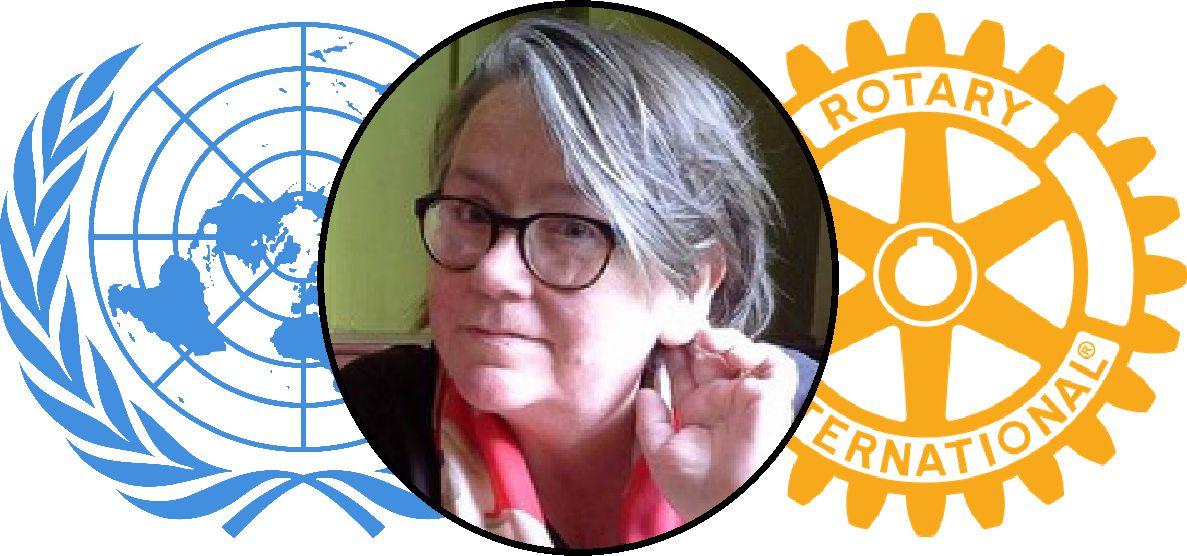
Thank you for inviting me to speak to the Croydon Rotary about the relationship between the United Nations and Rotary.
I am in the process of finishing up an MSc, mainly about the European Union, however when I got the chance to study another large transnational body in detail I jumped at the chance and signed up for a course about the United Nations.
The United Nations has quietly shaped so much of global co-operation and regulation that frankly we would not recognise our world today without the UN’s pervasive role in it. Even such simple things in the world today such as the price of postage and copyright laws are subject to international co-operation that has been shaped by the UN.
The UN at present like all of us is facing a very difficult moment in its history, there is the climate crisis, a global pandemic, great power competition, trade wars, economic slowdown and a tragic war that is being played out in Ukraine as we speak.
That being said, the UN has faced tough times before. Over many decades during the Cold War, the UN was crippled by deep tensions between the US and the Soviet Union. Now we are faced with the difficulties for the UN Security Council that will come from the war in Ukraine. However, the UN is not just about the high drama set piece meetings of the United Nations Security Council. During the everyday work of the UN representatives from different countries are thrown together dealing with such problems as the climate, dealing with poverty, hunger and for example sustainable development. These governmental representatives deal with each other on a more or less daily basis and this has the effect of creating political back channels that serve a valuable purpose at times of crisis.
However, this is very much another subject for another day, because after all I am here to talk to you about the pivotal role that the Rotary played in the foundation of the United Nations.
I came upon this subject quite by accident and with the help of a prominent local Rotarian Stephen Kirkman who sympathised with me when I was struggling with an assignment I had to write for college on the United Nations. Oh, he said, did you know that the Rotary were very involved with getting the original United Nations Charter signed in 1945? I find when studying a subject for the first time that having some sort of personal link to the subjects grabs my interest. So, looking into what links the Rotary had with the wartime roots of a post-war international order in the making very much brought the process of the foundation of the UN to light.
My research was further helped along by the vast amount of information on the Rotary International website and the huge archive of digital copies of ‘The Rotarian’ which is kept online at Google Books and the blogs and websites of Rotary clubs.
How did the UN come into being? It is true that there was the League of Nations, which was founded after WW1, however, this had not really worked. So, in the dark days of WW2 a meeting of President Roosevelt and Winston Churchill took place on board the USS Augusta in 1941 and the two leaders discussed how the world was going to function in the aftermath of WW2. A joint declaration was issued from this meeting where an agreed text stressed the importance of a collective international security agreement to ensure that a world war did not happen ever again.
The following year, the Declaration of United Nations 1942 was agreed between governments in exile from the European states calling for a new international organisation to keep the peace and finally, there was the Moscow declaration of four nations (i.e. UK, US, China and USSR) on General Security of 1943 which recognised the need for a postwar international organisation to succeed the League of Nations.
Declarations of intent are fine, but it was felt that there needed to be more work done on the detail of how these declarations of intent were brought to life. In 1944, the US organised a major conference of the big four powers, UK, US, China and the USSR at Dumbarton Oaks, an estate just outside Washington DC to start to flesh out the proposals.
The Dumbarton Oaks conference agreed in on tentative set of proposals (Proposals for the Establishment of a General International Organization).
The discussions at the conference were at times very difficult, especially in regard to the make-up of the United Nations. Who would be invited to become a member, the formation of the United Nations Security Council, and the right of veto that would be given to permanent members of the Security Council.
It was an eventful conference and like all good conferences there were a lot of comings and goings, discussions in corridors and quite a few visits to the Diamond Horseshoe, a local night club organised by Edward Stetinnius, the US secretary of state who brought UK and USSR delegates to have cocktails with Nelson G Rockefeller.
Nevertheless, there was a spirit of compromise in the conference and the deal, possibly aided by Mr Rockerfeller’s cocktails and albeit a tentative one, was struck.
In the meantime, sharp eyed Rotarians recognised that this idea of a new international organisation was an arena in which Rotary’s fourth object of the advancement of international understanding, goodwill and peace’ could well be pursued.
The Rotary pioneered what could only be described today as a large scale public consultation and education exercise about the formation of the new United Nations organisations.
After the conference, Rotary published a pamphlet called “What Can Rotarians Do Following Dumbarton Oaks?” It included the proposed charter, talking points, and suggestions for discussing with club members how the United Nations would relate to Rotary’s goal of advancing international understanding. It also emphasised the importance of having a plan ready for when the war ended, rather than waiting until the fighting stopped. The document pointed out an exhausted population may not be interested in such a major project and without public support the project will ultimately doomed. This meant that the possibility of further major conflicts would be high and the advent of nuclear weapons also meant that a further world conflict would be a recipe for disaster.
The Rotary document stated that after World War I, “proposals for international cooperation failed because of lack of enlightened public opinion to support them,” the document explained. Discussions among members “will help to create an informed public opinion” and hopefully the new international organisation would be built and supported by better understanding in the member states.
Rotary International carried out with the commitment to create informed public opinion by producing ‘Timely questions on Dumbarton Oaks’ which produced different views on various aspects of the proposed structure of the United Nations. Rotarians were encouraged to discuss this document at Rotary meetings and with friends, neighbours and other members of the community. The feedback from some of these discussions was to be sent back to Rotary International as it came, not filtered by any club resolutions etc. The Rotary wanted to hear what the public thought.
“Timely Questions on Dumbarton Oaks” followed to help Rotarians understand the complexities of the proposed charter. This pamphlet presented different perspectives on the security council and other aspects of the UN as topics for Rotary club programs or discussions either in club meetings or in the community.
From April to June 1945, delegations from 50 nations attended the United Nations Conference on International Organisation in San Francisco (often known as the San Francisco conference). The task of this conference was to write a charter acceptable to all of the nations. The delegations to this important conference were assisted in this historic effort by a large number of staff, advisers, and consultants.
Rotary International was one of 42 organisations the United States invited to serve as consultants to its delegation at the San Francisco conference. In early April 1945 Rotary International received a telegram from no less an individual as Edward Stettinius Jnr, the SOS for the United States. The consultant organisations each had seats for three representatives, so Rotary International’s 11 representatives served in rotation.
The consultant representatives from the Rotary International included the general secretary, the editor of The Rotarian, and several past presidents. Other Rotarians from Africa, Asia, Europe, and North and South America served as members of their own nations’ delegations.
Rotary International again saw this is as an unmissable opportunity to promote Object 4 and Rotary values and just before the San Francisco conference began Rotary International issued the “Pattern for the San Francisco Conference” pamphlet. Which stated that the San Francisco Conference “is a splendid opportunity for the individual Rotarian to fulfil the objective of International Service,” the document proclaimed, “by taking part in the debate on this scheme of world government.”
The Rotary’s enthusiasm for the new United Nations was reflected in the number of Rotarians among the signatories on the new charter on behalf of their nations in July 1945. There are some lovely existing films of the signature ceremonies which prominently features Rotarians from the 50 original member states.
Throughout the rest of 1945 and beyond, The Rotarian and other publications kept Rotary members informed about issues and developments related to the new organisation. Editorials and articles clarified issues, provided additional insights and talking points, and updated readers on what was happening, and the people involved:
• “Rotarians in the News at San Francisco,” July 1945
• “Report from San Francisco,” July 1945
• “Rotary at the Conference,” July 1945
• “Gateway to Peace,” August 1945
• “San Francisco Just Started It,” November 1945
After the UN was established, the 95-page booklet “From Here On!” contained the exact text of the UN Charter on one side of every two-page spread with annotations and questions designed to stimulate discussion on the other. With this layout, Rotarians could use it to learn and lead club discussions. This document is a remarkable one, it is exceedingly well informed and poses thoughtful and detailed questions about the United Nations.
The Charter, it explained, would be effective only if “free citizens” worldwide were determined to give it vitality. It continued that “The Rotarian faithfully following these pages,” the booklet said, “will find himself treading the path to service.”
In 1946, Rotary published a supplement listing the major accomplishments of the meetings held by the UN General Assembly in January and February of that year. Later articles in The Rotarian kept the United Nations and its work on the minds of members and included articles on:-
• “UN or World States,” June 1946
• “What Do You Want UN to Do?” September 1948
• “Speaking of the United Nations,” March 1955
• “Appraisal at San Francisco,” September 1955
• “How I Would Change the UN,” October 1955
Today Rotary has the highest consultative status at the Economic and Social Council of the United Nations. Along with Rotary, the partnership with the World Health Organisation and UNICEF, one of the major organs of the United Nations have played a vital role in the Global Polio Eradication Initiative which is close to wiping out Polio forever. I think that everyone present in the room today knows a great deal about that.
Another example is the yearly international Rotary – United Nations day where the partnership between both organisations is celebrated and ideas put forward for further development of the link. This year this event will be held on the 2nd November at the United Nations Headquarters in New York.
In conclusion, the Rotary for an organisation that prides itself on being non-political, showed an incredible amount of savvy in helping to pave the way for a United Nations that has popular support. Rotary history has become a subject of some academic study - some of it critical - however academic opinion, including mine, is that the Rotary in supporting the creation of the United Nations to further international and co-operation did the world a great service. After all, service is what the Rotary is all about.
Nuala O’Neill, LLB (Hons), LLM
12th April 2022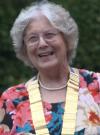 Contact Patricia Painting about this page:
Contact Patricia Painting about this page:
Related pages...
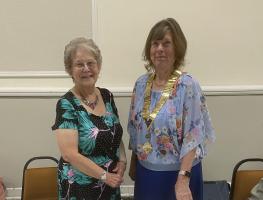
A NEW CLUB YEAR, A NEW PRESIDENT
more Croydon club members welcomed their new President, Loraine Davis at the Handover lunch on 27 June 2023
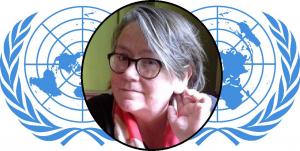
THE UNITED NATIONS AND THE SUSTAINABLE DEVELOPMENT GOALS
more Guest Speaker Nuala O'Neill
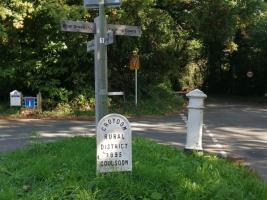
THE COALPOSTS OF LONDON
more A Talk by Adrian Curtis
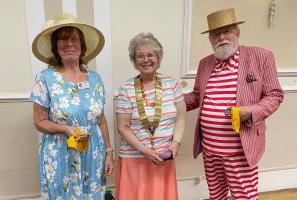
A PRESIDENTS HANDOVER...
more ...WITH A DIFFERENCE!
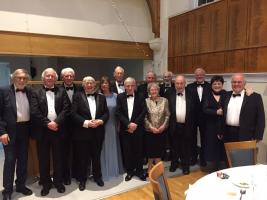
PAST PRESIDENTS ATTEND CENTENARY DINNER
more The first of our celebrations held on 12 March 2022 at Croham Hurst Golf Club.
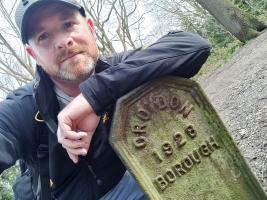
BEATING THE BOUNDS
more With Dr Ben Clifford 09 November 2021
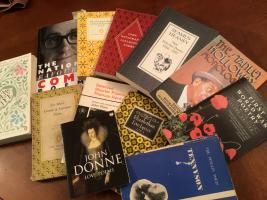
Remember, remember the 5th of November
more An evening of poetry
BEATING THE BOUNDS
more By Dr Ben Cliford
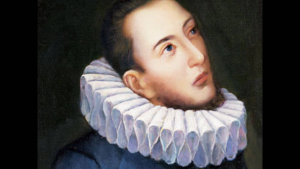
MURDER HE WROTE
more Carlo Gesualdo, Prince of Venosa by Guest Speaker, Kevin Painting